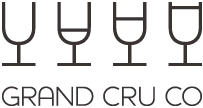US re-kindles Canada wine dispute at WTO
US officials have re-started a dispute with Canada over what they see as unfair treatment of foreign wines in the country. They have lodged a second complaint at the WTO against Canada and its wine selling laws on 2 October.
They targeted British Columbia, a key winemaking region, and attacked a rule that says only wines from within the province can sit on ‘regular shelves’ in grocery stores. Imported wines must be sold in a ‘store within a store’.
Canada is the top export market for US wines, with shipments valued at US$431 million in 2016, according to wine industry figures. The US initially raised the issue with the WTO shortly before president Trump took office.
Its fresh complaint effectively re-starts the clock. It has requested a consultation period, and if granted would allow 60 days for both sides to discuss their differences at the WTO. If no solution is found, the issue may then go before a WTO panel.
The timing will raise questions about whether US officials are trying to ratchet up pressure amid ongoing talks on the North American Free Trade Agreement. US, Canadian and Mexican officials held talks in Ottawa, Canada, last week.
Nafta, and the 1987 free trade deal between US and Canada, has helped US wine exports significantly. Shipments to Canada were only worth $22.9 million 30 years ago.
Now, the US wine industry, led by Wine America and the California Wine Institute, argues that Canada’s wine industry has reached a point at which it no longer needs the trade protection that it has historically enjoyed.
However, the Canadian Vintners Association produced a poster recently to emphasise that Nafta ‘has been a gift’ for US wine and that jobs must be protected in Canada’s smaller wine industry.
Large Beaujolais estate sold after three centuries in same family
Château de la Chaize, one of the largest wine estates in Beaujolais, is changing hands after three-and-a-half centuries of being owned by the same family.
Château de la Chaize has been sold to Maïa Group, an independent French company specialising in infrastructure and real estate. A fee was not disclosed, but local newspaper Le Progrès said it was understood to be a record sum for a Beaujolais producer.
Situated in Odénas, in the Rhône department, La Chaize extends over 250 hectares, with 99 hectares in the Brouilly appellation. Those 99 hectares produce 8% of the total production of Brouilly, one of the 10 crus of Beaujolais. The Brouilly appellation is valued at €70,000 per hectare, but it was estimated that the whole deal could have reached tens of millions of euros.
‘We took a family decision to sell,’ Caroline de Roussy de Sales, estate manager and a member of the previous owning family, was quoted as saying in Le Progrès. She said that it was important to sell to somebody who wanted to develop the vineyards and invest.
Founded in 1670 by the seneschal of Lyon François de la Chaize d’Aix, the main Château de la Chaize building and gardens were completed by Jules-Hardouin Mansart and André le Nôtre, respectively architect and gardener of the Château de Versailles.
Christophe Gruy, Maïa group president, described the purchase as a ‘beautiful challenge’. He said that he wanted to convert the estate to organic viticulture.
Popping cork sound ‘makes wine taste better’ – experiment
People who drink wine after hearing the sound of a cork popping are likely to think it tastes better, suggests a small study conducted by an Oxford University professor. An experiment with 140 people in London found that the same wine can taste better if it follows the sound of a cork popping versus the noise made by someone releasing a screwcap.
Overall, the same wine was rated as around 15% better quality with a natural cork, according to the study.
The experiment was designed by professor Charles Spence, of Oxford University’s crossmodal research laboratory. Synthetic corks were not tested. It was held at an event also co-hosted by the Portuguese Cork Association, which is a strong advocate for natural corks.
‘The sound and sight of a cork being popped sets our expectations before the wine has even touched our lips, and these expectations then anchor our subsequent tasting experience,’ said professor Spence.
He has previously conducted research on the effects of music genres on wine taste and has also recently written ‘Gastrophysics: The new science of eating’. Several closure companies have invested in researching consumer psychology.
For example, synthetic cork producer Nomacorc demonstrated to journalists several years ago that it was researching how the length of time it takes to pull a cork impacted on a wine lover’s satisfaction with the product. There is fierce debate over closures in the wine world, with different markets preferring types.
Many Australia and New Zealand wine producers, for instance, are staunch supporters of screwap, which they have claimed is more consistent. Natural cork makers, meanwhile, claim that they have made significant progress to reduce the proportion of wines suffering from cork taint in recent years.




